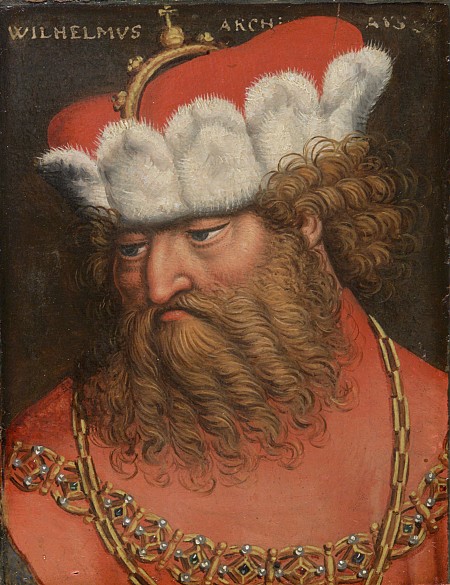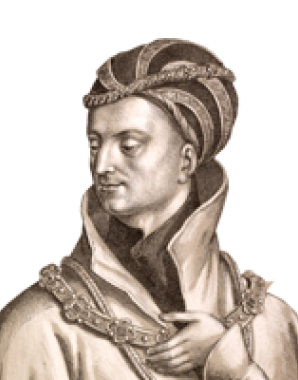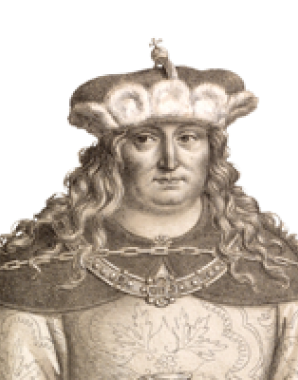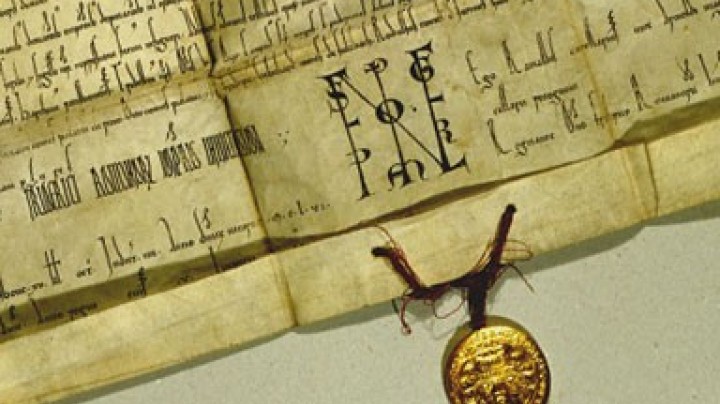William and his brothers
All his life William was in bitter competition with his three younger brothers. The inheritance conflict escalated and weakened the position of the dynasty for years to come. In all this Duke William played an ambiguous role.
At the age of sixteen William lost his father, who had fallen in the Battle of Sempach. Now head of the Leopoldine line, he had to recognize the authority of his uncle Albrecht III, the head of the Albertine line, as the senior member of the dynasty in accordance with the Habsburg House Rule.
In 1395 Albrecht died, and at the age of just twenty-five, William duly became the most senior member and overall head of the dynasty. In this position he soon found himself in conflict with his uncle’s son Albrecht IV, who although aged just eighteen contested William’s position and refused to concede him any rights over the Albertine domains. A compromise was reached in the Hollenburg Agreement, according to which both cousins would function as joint rulers over each other’s lands. The division between the lines of the dynasty was thus temporarily suspended.
William was also faced with demands from his younger brothers: his immediate younger brother Leopold IV wanted sovereignty over Tyrol and the Forelands, but the situation was further complicated by the fact that William still retained rights to these territories. Both brothers pledged to provide for their younger brothers Ernest and Frederick. However, the latter were making increasingly vehement demands for their portion of the paternal inheritance. In 1402 Ernest was granted joint rule in William’s territories (Styria, Carinthia and Carniola) and Frederick in Leopold’s domains (Tyrol and the Forelands).
The resulting fragmentation of sovereign rights, exacerbated by ill-defined distribution of competences and fraternal rivalry, weakened the dynasty as a ruling power. The beneficiaries of these divisions within the dynasty were the Estates of the individual territories which developed into a significant power factor.
These intrafamilial tensions also had an effect on the declining position of the dynasty within the European distribution of power, as the brothers entered into uncoordinated alliances with parties who were in conflict with one another.
William played a nebulous role in the affair of King Wenceslas IV of Bohemia, who until his deposition in 1400 also bore the title of Roman-German king. In the conflict between King Wenceslas and his younger brother King Sigismund of Hungary the Habsburg brothers William and Ernst together with their cousin Albrecht supported Sigismund. When the latter succeeded in deposing his brother and taking him prisoner, he entrusted the illustrious captive to his Austrian allies.
Kept prisoner in Vienna, Wenceslas subsequently succeeded in escaping, William having paid too little importance to keeping him in custody or possibly even aiding the deposed monarch in his escape. Whatever the truth of this matter, Sigismund began to doubt the loyalty of his Habsburg allies. The growing antagonism to Sigismund was fuelled by William’s plans to marry Joan of Naples-Anjou, whose brother had positioned himself as rival claimant to Sigismund for the Hungarian throne.
After the death of their cousin Albrecht IV, William and his brother Ernest finally changed sides in the conflict between the Luxembourg brothers, backing Wenceslas against Sigismund. Now the last remaining ties of solidarity within the dynasty broke, with the middle brother Leopold IV continuing to side with Sigismund. The result was a minor war of attrition on the borders of Hungary and Bohemia which led to large areas being devastated.
William’s sudden death at the age of thirty-six removed him from the stage. He was interred in the ducal crypt of St Stephen’s Cathedral in Vienna.

















